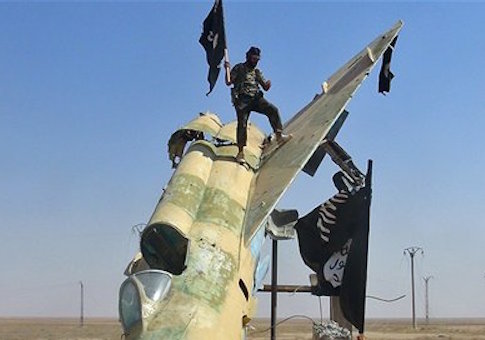The United States and Turkey have crafted a plan to rid a 60-mile-long zone along the Syrian-Turkish border of Islamic State terrorists, an ambitious plan that would result in heavy reliance on Syrian opposition fighters who are generally more concerned with crippling Bashar al-Assad’s regime than with toppling IS (also known as ISIL or ISIS) terrorists.
The New York Times reported that the plan would involve American warplanes, Turkish forces, and Syrian insurgents working together to push the strengthening IS forces out of the strip of land. Once rid of IS, the safe zone would be controlled by "moderate" Syrian rebels.
According to four anonymous senior Obama administration officials, the region would lie somewhere between the outskirts of the east part of the city of Aleppo and the Euphrates River, though details regarding the strip’s depth into Syria have not been established.
"Details remain to be worked out, but what we are talking about with Turkey is cooperating to support partners on the ground in northern Syria who are countering ISIL," a White House official explained of the plan. "The goal is to establish an ISIL-free zone and ensure greater security and stability along Turkey’s border with Syria."
Though the U.S. insists that the plan is meant as a move against IS and not one against Assad, the majority of Turkish and Syrian insurgents prioritize toppling Assad’s regime in Syria over scaling back the Islamic State.
In fact, both view such a free zone as an advantage over Assad, as it could allow them to curb the airstrikes launched by the Syrian government into regions occupied by the opposition while also shielding Turkey from the civil war.
The plan also begs the question of where the manpower will come from the Syrian opposition. Only 60 Syrian insurgents have received appropriate training and been vetted by the United States, and the administration officials did not specify the number of fighters needed to create the safe zone.
Regardless of the number of Syrian forces needed, the mission would require the United States military to work much more closely with the insurgents than it has thus far in the campaign against IS.
The problem with relying on Syrian opposition fighters and ultimately allowing them to control the strip of land is, of course, that many of them have connections to Islamic militant groups.
The unfolding plan to create the free zone comes just as the Islamic State exhibits signs of transformation from a terrorist organization into a functional state in the areas of Syria and Iraq that it controls. The militants, for example, have been issuing identification cards and dispersing fishing guidelines.
And, Sunnis in the areas of both countries controlled by IS see no other alternative but to continue to accept the terrorist organization’s rule, preferring it to the Shiite-controled Iraqi central government and Syrian President Bashar al-Assad’s regime.
Still, President Obama insisted earlier this month that there are "no current plans" to send more troops overseas to fight the Islamic State.
